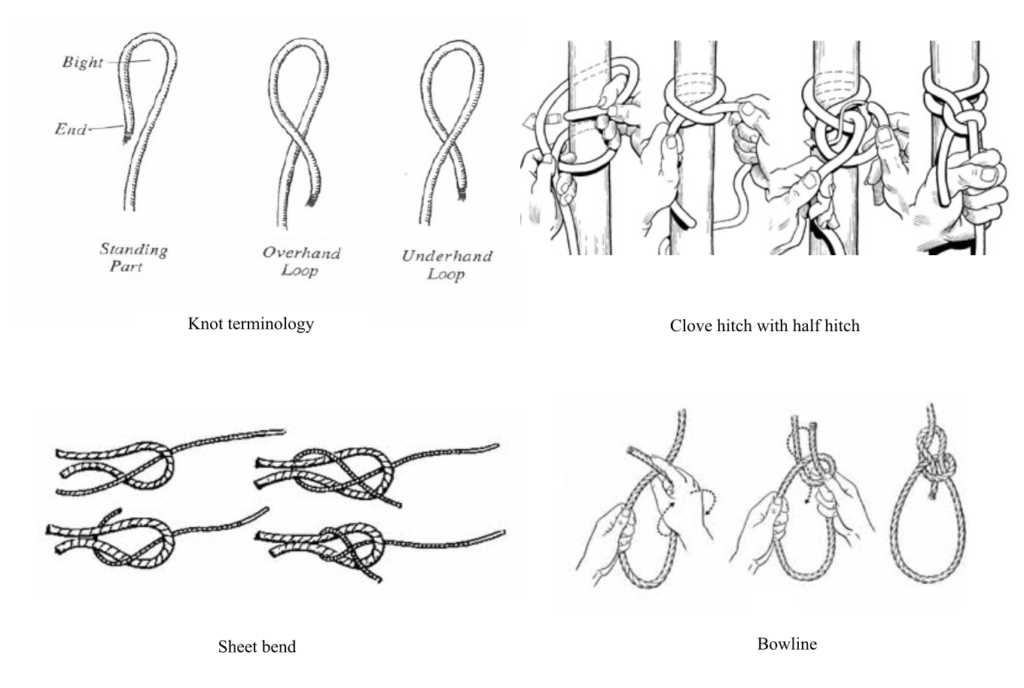
REGISTRATION IS OPEN
The Oklahoma Community Theatre Association is excited to bring back our Technical Tournament at the 2025 OCTAFest. Tech Tournament is for any group of 4 to 6 members who are willing to participate in both team and Individual events.
For all those who are interested in participating,
1. Form a team of 4 to 6 people
a. Each member must be an 2025 OCTAFest registrant – $125.00
2. Pay Team Fee for Entry – $50.00
3. Fill Out Registration Form
a. Team Information
b. Team Member Information
c. All Members Sign Liability Waiver
When the Registration Form is filled out and the Team Fee Paid then review the Oklahoma Community Theatre Association’s Technical Tournament event breakdown along with the rules and regulations.
There will be a winner for each event with an overall team announced at the end. The winning team will win half the registration pot.
Fully realized theatre productions would not be possible without the technical staff to build and implement the scenery, properties, costumes, sound, and lighting. There are some basic skills every good technician should learn and practice to be a well-rounded theatre maker. The purpose of this Olympiad is to test your knowledge of some of these basic skills. The combination of team and individual events underline the principle that theatre technicians work alone and in ensemble groups depending on the required task in order to make the production successful. In technical theatre, both time and accuracy are critical to a successful outcome. As artists, we demand excellence in the tasks we are given, but as technicians we also have to perform the tasks quickly and efficiently so as not to disrupt the production process.
OCTAFEST 2025 Tech Tournament Events (at least 4 of the following):
- Knot Tying (individual event)
- Costume Quick Change (pair event)
- Prop Scene Shift (pair event)
- Cable Relay (team event)
- Tool Relay (team event)
We acknowledge the fact that there are many methods to accomplish these tasks. The following manual was designed by professionals to communicate the standards upon which this event will be judged, providing criteria for your team to prepare for each event.
Overall Event Guidelines:
- During the competition, participants must wear closed foot shoes (no sandals or high heels).
- Participants must wear provided safety equipment appropriate for each event.
- Equipment, tools, etc. used during each event will be provided
- Top competitor(s)/team will be determined for each event
- Events will be assessed by time, accuracy, and safety
- Time Stop will be called at 5 minutes during all events (complete on not complete).
- Each individual participant must compete in a minimum of 2 events for their team.
Events
Knot Tying: Individual Event
Tying basic knots is an essential skill for a wide range of technicians who use it for everything from hauling equipment to the catwalk to properly rigging scenery.
In this event, individuals will be asked to correctly tie a series of commonly used knots for properly rigging scenery. Participants must tie knots correctly with a minimum of a 6” tail on all knot ends.
All knots can be found on here
- Clove Hitch tied with rope end
- Bowline
- Sheet Bend
- Square (Reef)
- Figure 8 (Flemish)
Event Sequence:
- Leave the Starting Line
- Tie the Clove Hitch on the pipe stand with one rope
- Tie a Half Hitch (a locking knot) on the Clove Hitch to secure it.
- Put the line through the hole and tie a Figure 8 (stopper knot).
- Tie a second rope to the first rope with a Sheet Bend. Tails for the sheet bend must be on the same side.
- Use the end of the second rope and tie a Bowline. Tails for the bowline must be on the inside of the loop.
- Return to the Starting Line

Penalties – Knot Tying
Placing rope in mouth | +5 seconds |
Failed knots or incorrectly tied knots (penalty for each) | +2 seconds |
Not having a minimum of 6” tail on all knot ends | +2 seconds |
Outside bowline: tail on outside of loop | +2 seconds |
Backward sheet bend: tail on opposite sides | +2 seconds |
Blatant Disregard of Rules/Safety | Disqualification from event |
Sample event – not exactly the same as our event: https://youtu.be/BkHDe42sJzQ?t=9
Costume Quick Change: Pair Event
During the run of any given production, the wardrobe head and dressing crew are responsible for the successful organization, running, and maintenance of the costumes. They make sure actors are in the correct costume at the correct time. They also maintain the look and integrity of the costume design. The wardrobe head and their crew manage costume quick changes to ensure the pace of the production is uninterrupted. Often the wardrobe crew has less than a few minutes to complete the quick change.
In this event, two people must successfully complete the costume quick change. The crew will have up to twenty seconds for prep before the actor is released from the starting line. The actor will enter even if crew are not ready. In this case, the actor was not able to underdress, so you will have to complete the entire change.
Participants will direct and assist an actor through a quick costume change while maintaining decorum and organization.
- The actor is dressed in their Beginning Costume and when time begins, the participants will direct and assist the actor in removing their beginning costume and putting on their Ending Costume.
- The actor will not assist the participants unless directed to do so by the participants.
- All snaps, hooks, zippers, must be properly used.
- Actor must be dressed in all appropriate accessories.
- Beginning Costume must be properly hung up/stored following the change.
Event Sequence:
1. Leave the starting line.
Technicians will have up to 20 seconds to prep before the actor is released from the starting line. Standard prep conventions like “puddling of costumes” and “reverse dressing” are acceptable.
Puddling of costumes refers to the placing of pants, skirt, shoes, etc. on the floor so an actor can step into them quickly.
Reverse dressing occurs when a dresser turns a shirt inside out, places his/her arms into sleeves, grabs hands of the actor and pulls the costume over the actor’s head and onto his/her arms at the same time.
2. After 20 seconds the actor is released from the starting line. Actor will be fully dressed in beginning costume.
Actor will enter even if the technicians are not ready
3. Technicians will assist the actor out of the beginning costume: undo fastening, help lift costume over head, etc.
Note- Actor can help unbuttoning, stepping out, removing shoes, etc. but only if the technicians request it.
4. Assist actor into ending costume. Do fastenings and put on hats/accessories.
5. Properly rehang/store beginning costume.
6. Return to starting line
Penalties – Costume Quick Change
Items not placed properly on actors | +5 seconds |
Missing accessories/clothing pieces | +5 seconds per item |
Unnecessary roughness/rude treatment of actor | +10 seconds |
Unnecessary noise | +5 seconds |
Costume not hung properly | +5 seconds |
Lack of teamwork | +10 seconds |
Blatant Disregard of Rules/Safety | Disqualification from event |
Sample event – not exactly the same as our event: https://youtu.be/ynyTuZSiKA4?t=24
Prop Scene Shift: Pair Event
During the run of a show, the run crew is responsible for the smooth transitions of set pieces and props. It is the successful run crew that creates the magic of quick scene changes. A dropped prop or missing piece can ruin a scene, even an entire production. Changes must be done as quietly, quickly, and efficiently as possible.
Participants must strike existing props and scenic items from an on-stage set up to their proper offstage storage area, then take a different set of props and scenic items from the offstage prop table area and set them up properly onstage.
- Participants will be given photograph of the beginning and ending scene looks as well as a shift sheet, and will be given up to 1 minute to review prior to beginning the event.
- The stage will have spikes for any furniture or scenic items to be set.
- Participants must not drop props or place them in
- Participants must move quietly and
- Participants must not rough handle or be careless with
- Participant must place items correctly and in proper orientation.
Event Sequence
- Leave the starting
- Clear the on-stage items as noted on the shift sheet and in the photograph.
- Place items on the pre-set marks on/by the off-stage prop
- Set the stage as noted on the shift sheet and in the photograph.
- Return to starting line.
Penalties – Prop Scene Shift
Noisily handling props | 5 seconds |
Carelessly handling props | 5 seconds |
Placing any item in the mouth or pocket | 5 seconds |
Improper position, missed spike onstage | 5 seconds per item |
Wrong Prop placed | 5 seconds per item |
Items not set in proper orientation | 5 seconds |
Excessive noise on or off stage | 5 seconds |
Blatant disregard for the rules | Disqualification from event |
Sample events – not exactly the same as our event: https://youtu.be/d4z7cMBWAOo?t=9
https://youtu.be/HUfqJQ-HAO4?t=25